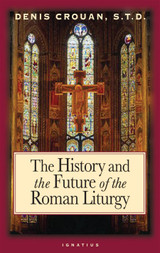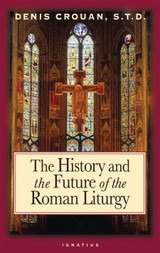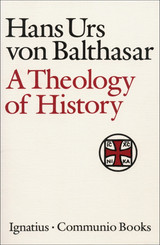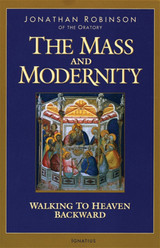Product Overview
This book is a short introduction to the development of the Roman Rite of Mass, the most widely used of the Church’s liturgical rites, from its origins in early Christianity until the present day. Over the centuries, the form of Mass most Catholics are familiar with has been shaped by the Apostolic See of Rome in contact and exchange with other local churches. Understanding this rich and complex history will help not only the clergy in their sacramental ministry, but all the faithful in participating consciously and fruitfully in the liturgy of the Church.
In the wake of the liturgical reforms initiated by Pope Pius XII in the mid-20th century, fully embraced by the Second Vatican Council, and implemented in the postconciliar period, there has been an intense and often controversial debate on continuity and rupture in liturgical development. Amid this debate, the long and complex history of the Roman liturgy is not always sufficiently acknowledged.
The refinement of the Roman Mass, as this book shows, has been marked both by continuity and by change. From its formative period in late antiquity, the ritual shape of the Roman Mass was affected by religious, social, cultural, political, and economic transformations. But changes are to be expected over such a long period of time and the wide geographical area where this rite has been used. It is the essential continuity that stands out.
This work challenges the conventional narrative that the liturgy of the Western church moved from early dynamic development through medieval decline to early modern stagnation and was only revived in the wake of the Second Vatican Council – a narrative that still has considerable traction both in academic publications and among the wider public.
Editorial Reviews
"One of our greatest scholars of the liturgy gives the Church an excellent primer on the ongoing evolution of Catholic worship over two millennia while offering wise counsel on a further 'reform of the reform.' Highly recommended for everyone who understands the intimate linkage between worship and belief, captured in the ancient maxim lex orandi, lex credendi—and even more so for those who don't."
— George Weigel, Author, The Next Pope and The Fragility of Order
"The Eucharist is the heart of the Church, from which all life emanates and into which it flows back. And this heart is love without limits. The knowledge of the history of the organic development of the Roman Rite of the Holy Mass helps to better understand and live this great and profound mystery. It is presented very well in a brief and poignant way in Father Lang's book."
— Cardinal Kurt Koch, Dicastery for Promoting Christian Unity, Vatican City
"This is a wonderfully refreshing history of the Mass, free of the clichés of the standard narrative. Fr. Lang's multidisciplinary approach opens up new horizons for the reader in a clear, succinct presentation. As the title suggests, this work is a short synthesis, especially useful as an introductory text."
— Fr. Cassian Folsom, O.S.B., Founder, Abbey of San Benedetto in Monte, Norcia (Italy)
"Balanced, erudite, accessible, charitable, and thorough, this book is now the gold standard for introducing the liturgy of the Catholic Church across the centuries, from the Last Supper to the present day. Aided by his characteristically winsome and serene prose, Lang traverses terrain filled with scholarly and pastoral landmines. Reasonableness and good sense shine forth from every page."
— Matthew Levering, Ph.D., Chair of Theology, Mundelein Seminary
"A work of inestimable value to the Catholic faithful. Father Lang is probably the world's leading expert on the history of the Roman Mass. In this lucidly written book, he shows how the Roman Rite developed from the Last Supper through the patristic, medieval, and Tridentine eras. He then provides an objective and insightful overview of the Liturgical Movement, the Second Vatican Council, and efforts of post-conciliar popes to foster liturgical renewal. Dedicated to the loving memory of Pope Benedict XVI, this book should be on the reading list of all faithful Catholics who wish to understand the historical development of the Roman Rite of Mass."
— Robert Fastiggi, Ph.D., Professor of Dogmatic Theology, Sacred Heart Major Seminary







